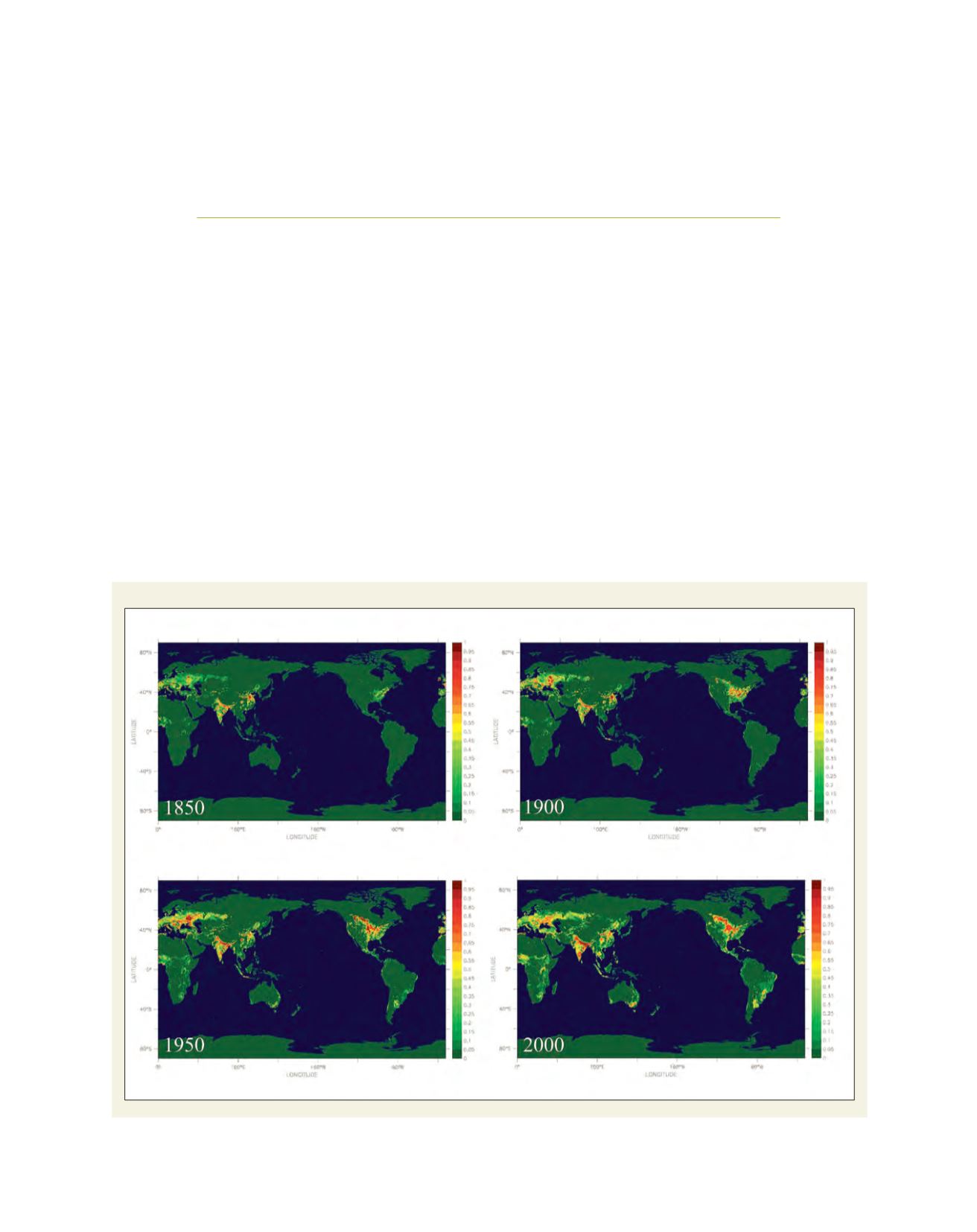

[
] 291
Foreseeing the forests: vegetation
dynamics in an Earth system model
Michio Kawamiya, Tomohiro Hajima, Tatsushi Tokioka,
Japan Agency for Marine-Earth Science and Technology
T
he notion that vegetation is influenced by climate has
been widely accepted and visualized in models such as
the Köppen-Geiger climate classification, which many of
us remember from our school days and to which professional
scientists still refer. In this model, boundaries between climate
zones, associated with annual and monthly mean temperature,
precipitation and seasonality of precipitation, are defined with
vegetation distribution in mind. Such a view naturally leads to
a concern that current global warming, due mainly to fossil fuel
burning, may also change the distribution of vegetation, neces-
sitating projections using ecosystem models.
Climate is, on the other hand, also influenced by
vegetation. Heat and water budgets and albedo (reflec-
tivity of solar radiation) are among the key factors
for surface climate and vegetation plays an important
role too. Concentration of carbon dioxide, one of the
main atmospheric components regulating the surface
temperature, is determined as a result of exchanges
among carbon reservoirs such as vegetation (in particu-
lar forests), oceans and atmosphere. It can thus be said
that the present global distribution of vegetation has
been established though its interactions with climate
Historical evolution of cropland
Source: Hurtt et al. (2009)
















